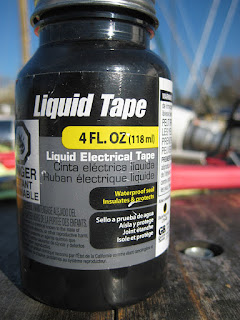We've all been there, as spectators or participants; a boat is sliding gently into a strange slip or anchorage (or even a familiar one) with one crew member at the helm and one at the bow. With practiced ease, good co-operation and communication aided perhaps by some simple hand signals, the boat comes to a stop under complete control at exactly the right spot to lazily hook the mooring buoy, casually pick up the dock lines or offhandedly release the anchor.......... Huh....wasssup....? Oh Jeez, it was just a dream!
All of us recreational sailors would love the dream to become reality every time (or even most times) we 'park'. For some well experienced crews it frequently does but, somehow, many of us still spend way too much time docking and anchoring in company with that famous Gaelic master-mariner, Cap'n Murphy or his equally well known firefighting friends from Asia! While we are happy to know that, between us all, we have brought a little mirth and merriment into the lives of other boaters as we pursue our goal of realising the dream, we wish it wasn't quite so often.
We Old Matelots certainly know how important practice and experience is in our quest to perfect our docking and anchoring technique but we also know that a little technology goes a long way to help! Enter the Simultalk 24G crew intercom system from Eartec.

http://www.eartec.com
Why Simultalk? We did the usual research on line and by way of a dock poll and quickly discovered that full duplex, hands-free systems were the only way to go. There are literally dozens of walkie/talkie systems on offer, many at quite low prices, but there aren't too many full duplex hands free systems. Being able to speak simultaneously, without having to fumble with 'press to talk' buttons with cold and/or wet and/or muddy hands is far better than the alternatives.
A really nice feature of the Simultalk package is the compact and lightweight headset. Competitive systems have bulky headsets that are easily dislodged from the head, can hang up on clothing or rigging and make it difficult to wear brimmed hats or foulie hoods.
Because there is no need to access a 'push to talk' button, the transceiver can be kept in any pocket or on the back of the belt with the cable run inside or outside the clothing.
The Simultalk system package includes two head sets, two transceivers, two AC chargers........
.........and comes in a handy dandy HDPE moulded case for protection and storage.
Now, we aren't saying that the Simultalk will directly improve our close quarters boat handling, docking and anchoring but, if things don't get better, we will have eliminated one big excuse!
A really nice feature of the Simultalk package is the compact and lightweight headset. Competitive systems have bulky headsets that are easily dislodged from the head, can hang up on clothing or rigging and make it difficult to wear brimmed hats or foulie hoods.
Because there is no need to access a 'push to talk' button, the transceiver can be kept in any pocket or on the back of the belt with the cable run inside or outside the clothing.
The Simultalk system package includes two head sets, two transceivers, two AC chargers........
.........and comes in a handy dandy HDPE moulded case for protection and storage.























